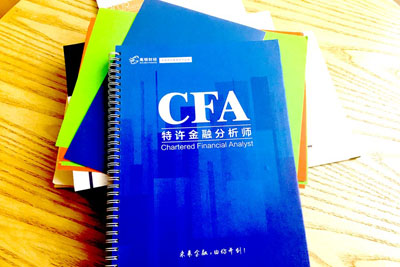2022年CFA一二三级考纲变动说明(附科目变化)
2022-01-05
摘要2022 年所有科目的权重未发生变化,但是整体顺序出现大量调整,数量科目由原本的第二个科目变为第一个,道德科目变为最后一个章节。本次调整是协会时隔两年来第一次调整,考纲变动涉及到科目较多,其中数量、公金、另类、组合科目都出现了重大变动,其余科目也都存在新增细节考点或者考点表述变动。
2022年CFA一二三级考纲变动说明(附科目变化)
推荐阅读:2022CFA一二三级考纲变动分析PDF哪儿下载
CFA L1 2022 年考纲变动分析
2022 年所有科目的权重未发生变化,但是整体顺序出现大量调整,数量科目由原本的第二个科目变为第一个,道德科目变为最后一个章节。本次调整是协会时隔两年来第一次调整,考纲变动涉及到科目较多,其中数量、公金、另类、组合科目都出现了重大变动,其余科目也都存在新增细节考点或者考点表述变动。
一.数量
考纲变化:
数量科目权重未变 8-12%,但被移动到第一个部分,替代道德的位置。总体来说,本科目是新考纲中变动较大的科目,主要体现在协会更加注重知识的实用性,与当前 金融行 业的 发展非 常契合 。新 增两个 章节分 别为 , Organizing,Visualizing, And Describing Data 以及 Introduction To Linear Regression,同时删除 Statistical Concepts and Market Returns,其余每一个 reading 都有少量的增减。
变化分析:
第一个新增的“Organizing, Visualizing, and Describing Data”其实是原本“Statistical Concepts and Market Returns”的进阶版本。在新增的这个章节中,除了保留对数据描述性的分析介绍之外,更加注重对数据进行系统性的分类、整理和可视化分析,介绍了在实务中常用的一些数据分析手段和方法论,比如热力图、树状图、云图、气泡线图等。
另一个新增的章节“Introduction to Linear Regression”原本是二级数量中的一个章节,这个章节主要讲的是线性回归的基本逻辑和原理,是为二级数量中多元回归打基础的一个章节。另外,线性回归是金融数据分析中常用的一个量化分析模型,更加偏重应用,突出了协会对量化建模的重视。
具体变动内容:
STUDY SESSION 1 - QUANTITATIVE METHODS(1)
READING 1. THE TIME VALUE OF MONEY(原 Reading 6-R6):
(1)由 solve time value of money problems for different frequencies ofcompounding 变为 calculate the solution for time value of money problems with different frequencies of compounding,考纲描述变化。
Reading 2. ORGANIZING, VISUALIZING, AND DESCRIBING DATA(组织、可视化、数据描述)-新增章节,替换原 reading 2 统计概念和市场回报:
(1) identify and compare data types;数据种类
(2) describe how data are organized for quantitative analysis;数量分析
(3) interpret frequency and related distributions;频率&分布
(4) interpret a contingency table;情景分析表
(5) describe ways that data may be visualized and evaluate uses of
specific;数据可视&评估分析
(6) visualizations;可视化
(7) describe how to select among visualization types; 数据可视化方式选
择
(8) calculate and interpret measures of central tendency;中心极限定理
(9) evaluate alternative definitions of mean to address an investment
problem; 评估在投资问题中出现的平均值定义
(10) calculate quantiles and interpret related visualizations;分位&可视
化
(11) calculate and interpret measures of dispersion;离散的计算解释
(12) calculate and interpret target downside deviation;目标下行偏差
(13) interpret skewness;
(14) interpret kurtosis;
(15) interpret correlation between two variables.变量相关性
READING 3. PROBABILITY CONCEPTS(原 R8):
描述:考点顺序变化,具体细节考点有微小变化:
(1)conditional probabilities 考 点 由 distinguish ( 对 比 ) between unconditional and conditional probabilities 变为 calculate and interpret(计算&解释)conditional probabilities。 (2)原考点 calculate and interpret 1) the joint probability of two events,
2) the probability that at least one of two events will occur, given the probability of each and the joint probability of the two events, and 3) a joint probability of any number of independent events 删除。
(3)原考点 calculate and interpret covariance and correlation and
interpret a scatter plot 删除。
STUDY SESSION 2 - QUANTITATIVE METHODS(2)
READING 4. COMMON PROBABILITY DISTRIBUTIONS(原 R9) 本 reading 全部具体描述基本全部改写,但是知识内容并没有发生变化。
READING 5. SAMPLING AND ESTIMATION
(1)由 define simple random sampling and a sampling distribution 变为
compare and contrast probability samples with non-probability samples
and discuss applications of each to an investment problem,描述转换。
(2)compare and contrast simple random, stratified random, cluster,
convenience, and judgmental sampling,新增聚类等概念。
READING 6. HYPOTHESIS TESTING
描述:总体改动不大,部分由细微的调整,对于参数检验和非参检验增加更加详
尽的描述。
READING 7 INTRODUCTION TO LINEAR REGRESSION 新增章节
(1) describe a simple linear regression model and the roles of the
dependent and independent variables in the model;
(2) describe the least squares criterion, how it is used to estimate
regression coefficients, and their interpretation;
(3) explain the assumptions underlying the simple linear regression
model, and describe how residuals and residual plots indicate if these
assumptions may have been violated;
(4) calculate and interpret the coefficient of determination and the
F-statistic in a simple linear regression;
(5) describe the use of analysis of variance (ANOVA) in regression
analysis, interpret ANOVA results, and calculate and interpret the
standard error of estimate in a simple linear regression;
(6) formulate a null and an alternative hypothesis about a population
value of a regression coefficient, and determine whether the null
hypothesis is rejected at a given level of significance;
(7) calculate and interpret the predicted value for the dependent
variable, and a prediction interval for it, given an estimated linear
regression model and a value for the independent variable;
(8) describe different functional forms of simple linear regressions.

每年CFA考试大纲变化幅度大概10%-20%左右,同时每年CFA考纲变化部分是CFA考试重要内容。除了考试必考点、重难点,考纲变化也是一大考点,CFA考生要熟记这些2022年CFA考试考纲变化的内容。
中国CFA考试网(www.cfa.cn)综合整理,来源:中国CFA考试网,原创文章,经授权转载,若需引用或转载,请注明出处 ,仅供参考、交流之目的。
相关CFA内容推荐阅读:







 CFA考试百科
CFA考试百科

 24年全新CFA报名流程&预约考位流程!
24年全新CFA报名流程&预约考位流程!





